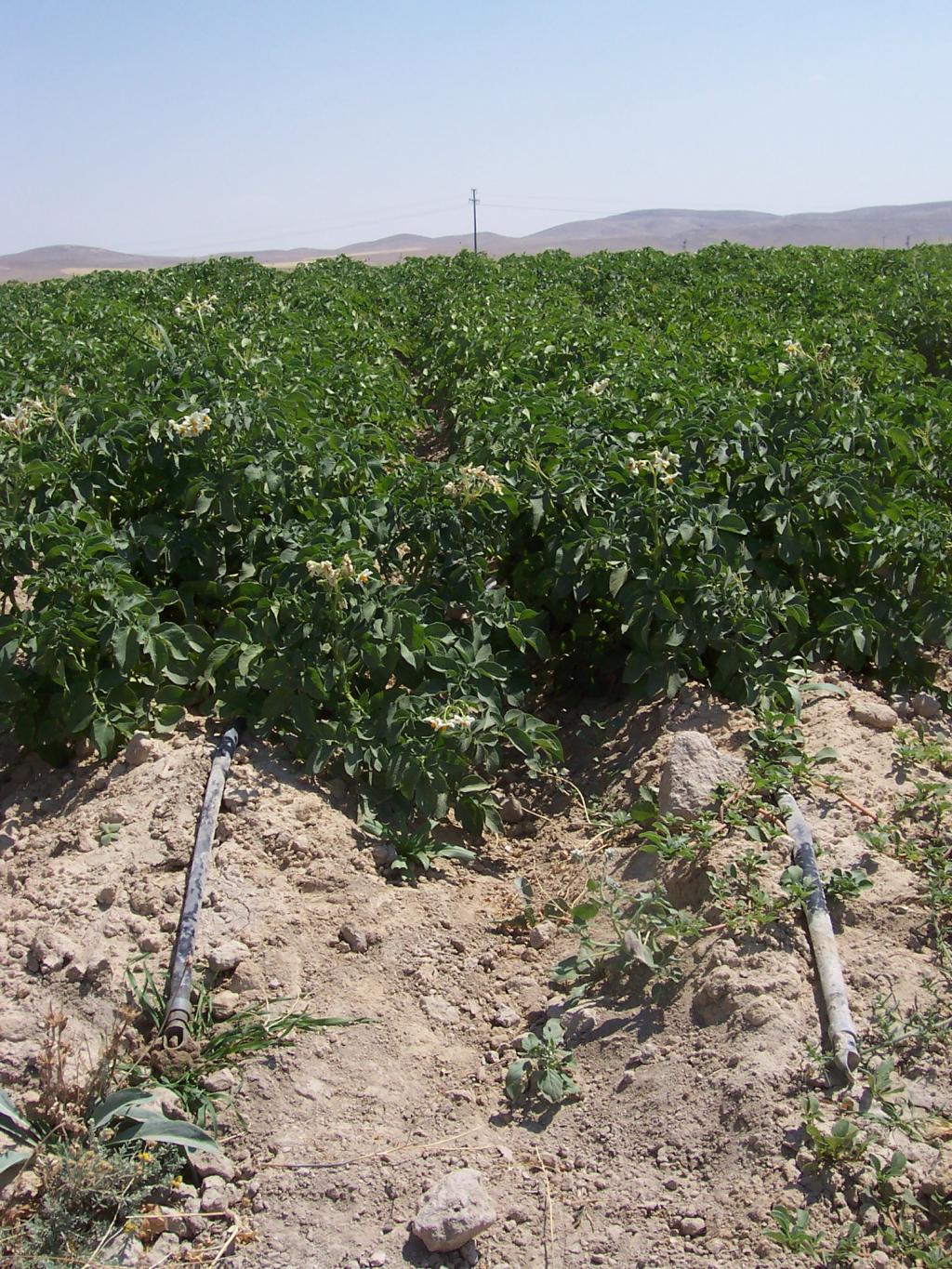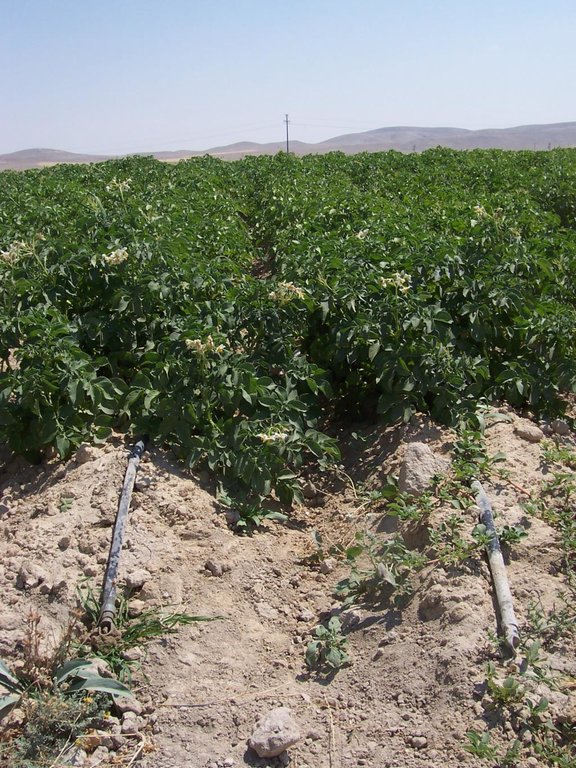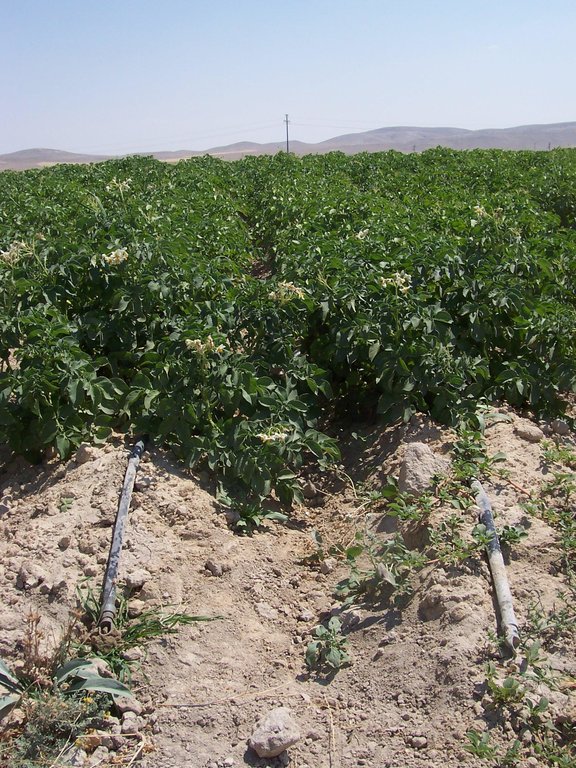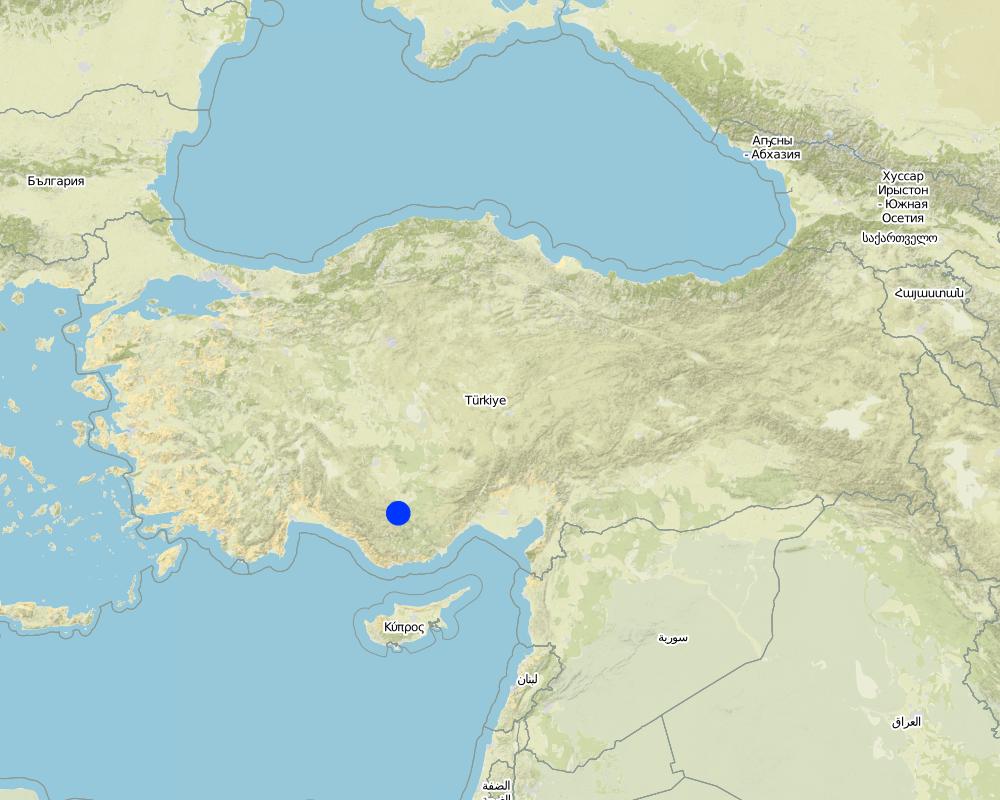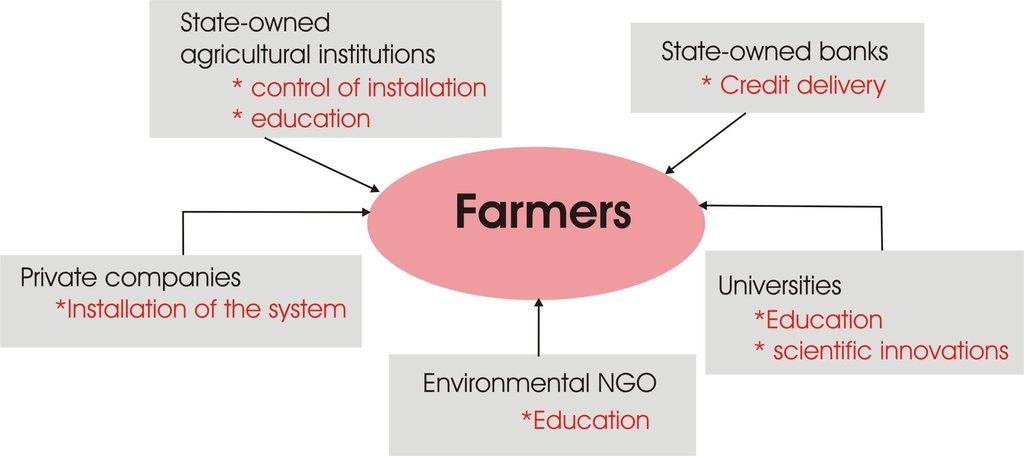Minimum Water Use [土耳其]
- 创建:
- 更新:
- 编制者: Mehmet Zengin
- 编辑者: –
- 审查者: Fabian Ottiger
approaches_2424 - 土耳其
查看章节
全部展开 全部收起1. 一般信息
1.2 参与方法评估和文件编制的资源人员和机构的联系方式
有助于对方法进行记录/评估的机构名称(如相关)
University of Selcuk, Faculty of Agriculture (University of Selcuk, Faculty of Agriculture) - Türkiye1.3 关于使用通过WOCAT记录的数据的条件
编制者和关键资源人员接受有关使用通过WOCAT记录数据的条件。:
是
1.4 SLM技术问卷的参考
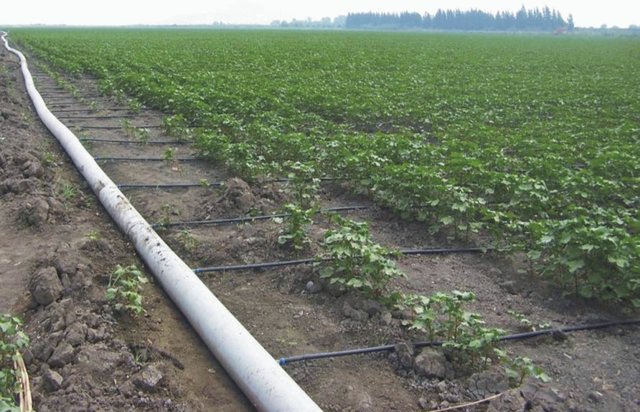
Drip irrigation [土耳其]
Drip irrigation is a method designed for minimum use of water and labour for the optimum irrigation of plants in arid and semi-arid regions.
- 编制者: Faruk Ocakoglu
2. SLM方法的描述
2.1 该方法的简要说明
Instead of flow irrigation that requires high water consumption and causes excessive evaporation, water can be transported in pipes till crop's body and can be given slowly under controlled conditions. The approach is brought to farmers by state institutions as well as banks, and education for the scientific background, installation and usage of the technology is provided by state-owned companies
2.2 该方法的详细说明
该方法的详细说明:
Aims / objectives: To inform the farmers who use water in their crops about minimum water use, effective water use, in order to conserve underground water resources in semi-arid regions. The basic stress of the approach is to demonstrate the advantages of drip irrigation in terms of croping, soil preservation and particularly the water preservation.
Methods: To convey water by means of pipes until the crop roote zone and distribute water in a controlled manner by using valves. This method facilitates also the use of chemical fertilisers.
Stages of implementation: The methods of drip irrigation system will be tought in detail to land users. Measure addresses to the benefits of minimum water use by field demonstrations. Information is delivered to the farmers in winter and the other studies are caried out in spring and summer.
Role of stakeholders: Actually drip irrigation plans are done by private companies and there is significant financial support from state companies. The role of stakeholders are limited with the eagerness to follow approach and to use suitable crop types.
2.3 该方法的照片
2.5 采用该方法的国家/地区/地点
国家:
土耳其
区域/州/省:
Konya
有关地点的进一步说明:
Karapınar
Map
×2.6 该方法的开始和终止日期
注明开始年份:
2004
2.7 方法的类型
- 基于项目/方案
2.8 该方法的主要目的/目标
The Approach focused mainly on SLM with other activities (Drip irrigation system, irrigation, minimum water.)
To conserve the underground water, inform the farmers about the mechanisms of saving water by minimum irrigation, showing them advantage of this irrigation and then create a demand among farmers towards drip irrigation and build a robust structure between controlling authorities, knowlegde supplying units (such as universities) and financial sector.
The SLM Approach addressed the following problems: Drought and decreasing level of underground water. Lack of technical knowledge on drip irrigation tecniques and lack of existing budget to promote these techniques.
2.9 推动或妨碍实施本办法所适用的技术的条件
财务资源和服务的可用性/可得性
- 阻碍
Treatment through the SLM Approach:
法律框架(土地使用权、土地和水使用权)
- 启动
The existing land ownership, land use rights / water rights moderately helped the approach implementation: Existing fields belong to individual farmers but they are highly fragmented due to inheritence.
- 阻碍
Treatment through the SLM Approach:
了解SLM,获得技术支持
- 阻碍
Treatment through the SLM Approach:
3. 相关利益相关者的参与和角色
3.1 该方法涉及的利益相关者及其职责
- 当地土地使用者/当地社区
- SLM专家/农业顾问
- 国家政府(规划者、决策者)
3.2 当地土地使用者/当地社区参与该方法的不同阶段
| 当地土地使用者/当地社区的参与 | 指定参与人员并描述活动 | |
|---|---|---|
| 启动/动机 | 无 | |
| 计划 | 被动 | Planning is done by authorised private companies. |
| 实施 | 互动 | Implementation is done in colloboration with private companies and individual land owners. There is significant credit supports from the state for implementation of approach. |
| 监测/评估 | 互动 | Monitoring and evaluation is done by land owners themselves. |
| Research | 无 |
3.3 流程图(如可用)
3.4 有关SLM技术选择的决策
具体说明谁有权决定选择要实施的技术:
- 主要是SLM专家,咨询土地使用者之后
解释:
Decision is taken from top to bottom, mainly fueled with favorable agricultural credits organised by the state. Some large scale agricultural farms can build the minimum water use system by themselves without any technical and financial help from the state.
Decisions on the method of implementing the SLM Technology were made by mainly by SLM specialists with consultation of land users
4. 技术支持、能力建设和知识管理
4.1 能力建设/培训
是否为土地使用者/其他利益相关者提供培训?:
是
明确受训人员:
- 现场工作人员/顾问
培训形式:
- 示范区域
涵盖的主题:
They watched minimum irrigation water use technique with demonstrations.
4.3 机构强化(组织发展)
是否通过这种方法建立或加强了机构?:
- 是,适度
具体说明机构的强化或建立程度:
- 本地
具体说明支持类型:
- 能力建设/培训
提供进一步细节:
Local state experts control the installation to be sure that it is done accordingly the plan, and universities and local state institutions help in education of farmers on the benefits and way of installation of the approach.
4.4 监测和评估
监测和评估是该方法的一部分吗?:
是
注释:
technical aspects were ad hoc monitored by government, other through observations; indicators: extension experts and universities made the observations.
economic / production aspects were ad hoc monitored by land users through observations
management of Approach aspects were ad hoc monitored by government through observations
There were many changes in the Approach as a result of monitoring and evaluation: As the advantages (technical as well as financial) of the approach become clear by monitoring activites though discontinous, the new irrigation teqniques is adopted by increasingly more farmers.
There were many changes in the Technology as a result of monitoring and evaluation: Technology does not change too much but its adoption rate increases.
4.5 研究
研究是该方法的一部分吗?
是
明确话题:
- 生态学
提供进一步的细节,并指出是谁做的研究:
Research was carried out on station
5. 融资和外部物质支持
5.1 该方法中SLM组成部分的年度预算
如果不知道准确的年度预算,请给出一个范围:
- 100,000-1,000,000
注释(例如主要的资助来源/主要捐助者):
Approach costs were met by the following donors: government: 90.0%; other: 10.0%
5.2 为土地使用者提供财政/物质支援
土地使用者是否获得实施该技术的财政/物质支持?:
是
5.3 对特定投入的补贴(包括劳动力)
- 设备
| 具体说明哪些投入得到了补贴 | 程度如何 | 对补贴做出具体说明 |
|---|---|---|
| 机械 | 充分融资 | |
| 工具 | 充分融资 | Hand tools |
如果土地使用者的劳动力是一项重要的投入,那么是不是:
- 以粮换工
注释:
Normally, installation of the irrigation system is done by the specialised componies with speciel equipments. Farmers only help them voluntarily.
5.4 信用
是否根据SLM活动的方法给予信用值?:
否
6. 影响分析和结论性陈述
6.1 方法的影响
该方法是否帮助土地使用者实施和维护SLM技术?:
- 否
- 是,很少
- 是,中等
- 是,支持力度很大
Drip irrgation system affected positively minimum water use.
该方法是否有助于社会和经济弱势群体?:
- 否
- 是,很少
- 是,中等
- 是,支持力度很大
This group is not economically strong to install the approach, for this reason its benefits to this group is small.
该方法是否改善了阻碍SLM技术实施的土地使用权/用户权问题?:
- 否
- 是,很少
- 是,中等
- 是,支持力度很大
Small size of individual crop fields hinders the approach and and its implementation. The problem is likely to be overcome in the near future. By gatering together of these small fields might ease the application of technique in the future.
Did other land users / projects adopt the Approach?
- 否
- 是,很少
- 是,中等
- 是,支持力度很大
Did the Approach lead to improved livelihoods / human well-being?
- 否
- 是,很少
- 是,中等
- 是,支持力度很大
Man power significantly decreased in irrigation. But the basic improvement is on the water save and crop yield increase.
Did the Approach help to alleviate poverty?
- 否
- 是,很少
- 是,中等
- 是,支持力度很大
6.2 土地使用者实施SLM的主要动机
- 增加生产
- 增加利润(能力),提高成本效益比
reducing significantly the energy usage for pumping water.
- 减少工作量
irrigation in this way is quite easy.
- 支付/补贴
Credits are low interest and long term.
6.3 方法活动的可持续性
土地使用者能否维持通过该方法实施的措施(无外部支持的情况下)?:
- 是
6.4 该方法的长处/优点
| 土地使用者眼中的长处/优势/机会 |
|---|
| Drip irrigation system is very easy and energy costs are low. (How to sustain/ enhance this strength: More long term credit will increase the application of approach.) |
| 编制者或其他关键资源人员认为的长处/优势/机会 |
|---|
| Minimum water use conserve water sources. It positively affects crop yields and quality. (How to sustain/ enhance this strength: Training, demonstration and giving credit to farmers while begining to set up drip irrigation. ) |
6.5 该方法的弱点/缺点以及克服它们的方法
| 土地使用者认为的弱点/缺点/风险 | 如何克服它们? |
|---|---|
| Drip irrigation system is expensive. They have no enough techniqual knowledge on the sytem in drought regions. | By receiving bank credit at the begining and crop market values must be high. |
| 编制者或其他关键资源人员认为的弱点/缺点/风险 | 如何克服它们? |
|---|---|
| First investment expenses are high in drip irrigation system. Farmers do not know completely water use techniques. | By the training and demonstrations |
7. 参考和链接
7.1 方法/信息来源
- 实地考察、实地调查
- 与土地使用者的访谈
链接和模块
全部展开 全部收起链接

Drip irrigation [土耳其]
Drip irrigation is a method designed for minimum use of water and labour for the optimum irrigation of plants in arid and semi-arid regions.
- 编制者: Faruk Ocakoglu
模块
无模块


